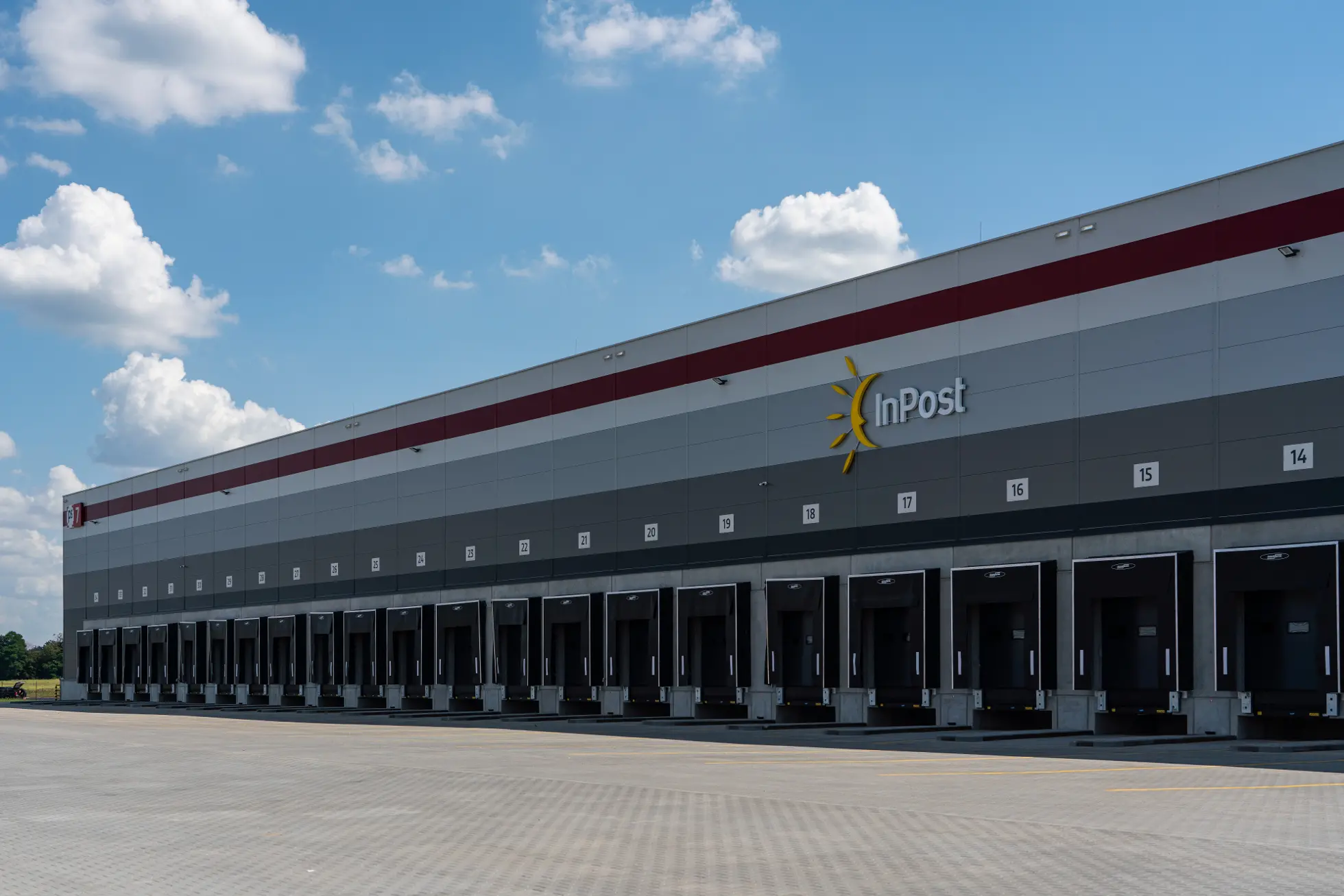

A BREEAM certificate is more than just a piece of paper: it is a sign of adherence to demanding ecological requirements. But obtaining the best possible rating is often not as easy as many project developers initially assume. The InPost logistics centre developed by P3 Logistic Parks offers a glimpse into what sustainable logistics could look like in the future.
It has long been clear: sustainable practices are not a trend, but a responsibility. Particularly in the logistics sector it is more important than ever to create sustainable solutions – especially in light of the current boom in e-commerce. These sustainable practices start with the construction of the logistics property. But how do developers most effectively achieve the best possible assessment for their sustainable logistics centres?
P3 meets high environmental standards
The BREEAM rating system is the most important sustainability metric. It has made a name for itself in logistics, not only due to being internationally recognized, but also because it puts a strong emphasis on green infrastructure surrounding buildings. “BREEAM allows for the assessment of entire portfolios as well as a wide range of building types and can therefore be applied across diverse categories from management to energy and pollution, to materials and transport”, explains Lenka Matějíčková, Head of Sustainability at Arcadis, a company that is certifying most of the P3 portfolio with BREEAM.
Numerous project managers pursue ambitious BREEAM goals. Many, however, lack the knowledge of how to achieve these aims in practice. The InPost cross-docking and sorting centre developed by P3 Logistic Parks in Mszczonów, Poland, received with 65.4% the highest score ever on the Polish market in the BREEAM 2016 NC Industrial certification system. The logistics centre, where 300 employees sort several hundred thousand parcels daily, greatly demonstrates how a high BREEAM rating can be achieved. For this warehouse, Gleeds Polska supported P3 in planning the sustainable strategy and BREEAM certification, as well as in investor supervision, investment management, and costs.
Insect hotels and 400 trees
Immediately striking in the case of P3’s InPost property are the green surroundings. Gardeners planted almost 400 trees on the site and there is also a flower meadow and five insect hotels. More than 80 per cent of the trees planted are native species, do not require artificial irrigation and were selected to increase biodiversity. Aspects like this meticulous attention to detail are essential for a high BREEAM rating.
Sustainability measures should be considered right from the pre-planning stage. In this way, the team can explore multiple solutions as well as directly implement any recommendations. External consultants should also be involved in the process when analysing ideas. Ecologists worked on the design of the InPost building and produced a technical report with recommendations. Planting trees is a good and environmentally friendly move, but doing so with a strategic plan is even better. Tree strips stop dust pollution and proper planting provides shelter. Dense planting protects against wind, reduces evaporation and increases water retention.
How taps play into the sustainability equation
Resource-conscious decisions at every stage of the construction process help to reduce consumption. However, the sustainability aspect can quickly fall out of mind. “When buying a tap, attention is so often paid to appearance - but not to water consumption. However, such factors contribute to - or prevent - a high overall BREEAM rating”, Lenka Matějíčková states. This can be seen in practice: the InPost property achieved water savings of up to 55 per cent by selecting armatures in the bathrooms which had specific water flow rates. A system of eight solar cells was installed to heat water as well as a purpose-built retention tank to collect rainwater.
Sustainability experts should be present on the construction site and ensure that supplies ordered from manufacturers were produced using recycled materials and green energy. As with the construction of the InPost warehouse, one approach is to use the EPD (Environmental Product Declaration) certificate for guidance. This provides information on what materials a product is made of and the impact these have on the environment. In the case of the wood used, care was taken to ensure that there was confirmation of legal procurement in the form of the FSC certificate (Forest Stewardship Council).
Green Logistics: Part of the business strategy
For an increasing number of companies, measurable sustainability goals are becoming a part of business strategy. Climate-neutral and eco-friendly logistics properties contribute to these goals. Although project developers are still hesitant to invest, the added value of sustainable construction is obvious: from construction planning, to implementation, to long-term operation, a focus on sustainability pays off. It is not only the building tenants who reap the rewards. In the long run the whole population profits from fewer emissions, conservation of resources, and a richer and more diverse environment.